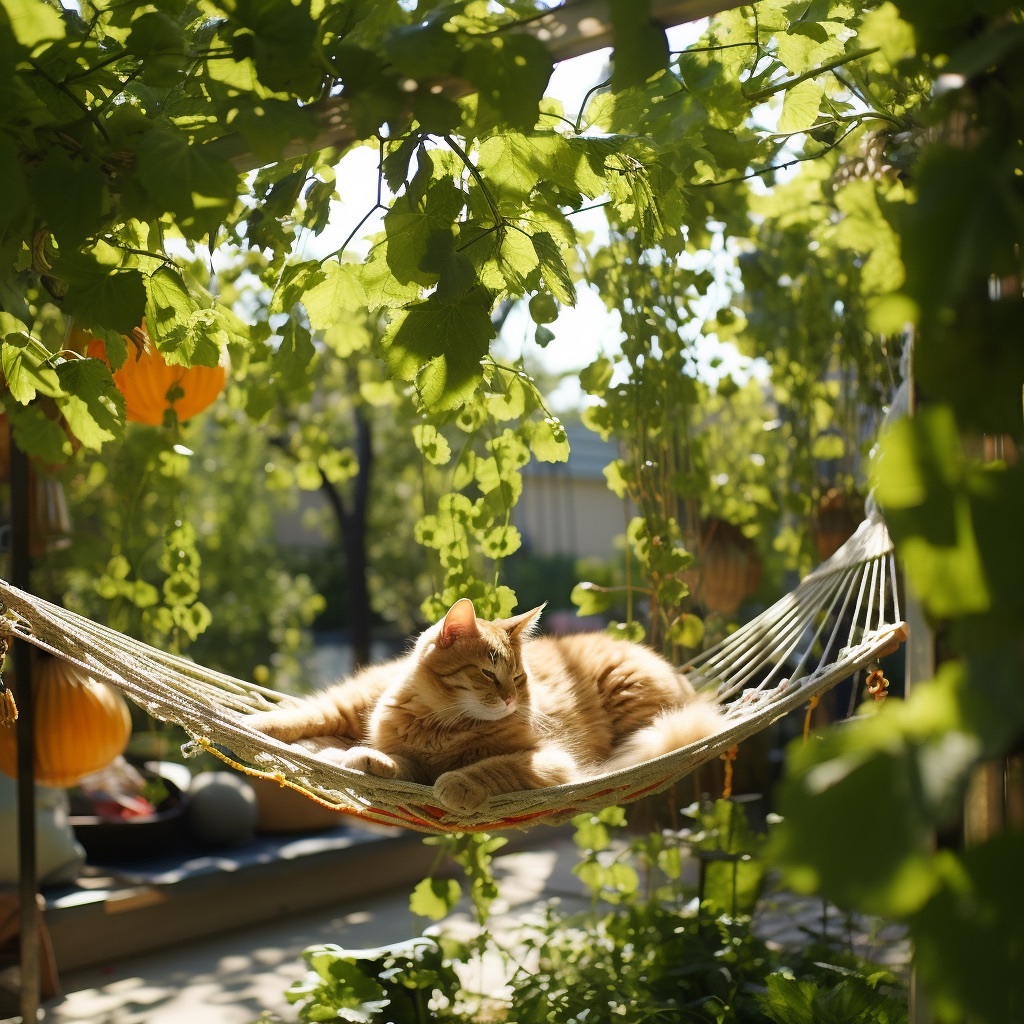
Table of Contents
Introduction: Cats and Plants – A Tale of Two Worlds
Imagine you’ve spent hours cultivating a lush indoor jungle, only to discover your feline friend nibbling on your precious greenery. Your heart sinks as you wonder, “Can cats and plants ever be friends?”
Rest assured, the answer is yes! With a bit of knowledge and creativity, you can create a harmonious coexistence between your curious kitty and your beloved plants. Let’s embark on a journey to unravel the mysteries of cat-plant interactions, equipping you with the tools to transform your home into a peaceful haven for both.
Why Do Cats Eat Plants? A Journey into the Feline Mind
Have you ever caught your cat nibbling on your houseplants, leaving you baffled about their sudden interest in greenery? While cats are known as obligate carnivores, meaning they primarily thrive on a meat-based diet, their occasional plant-munching habits leave us scratching our heads.
To unravel this mystery, let’s delve into the fascinating world of cat behavior. One possible explanation for their plant-eating tendencies lies in their digestive needs. Cats may seek out plants to consume fiber, which aids in proper digestion and helps eliminate hairballs, those pesky clumps of fur that form in their stomachs.
Another reason cats may gravitate towards plants is boredom. As curious creatures, cats constantly seek out new experiences and activities to keep their minds engaged. When their daily routine lacks stimulation, they may turn to plants for entertainment, nibbling on them out of curiosity or to relieve stress.
Finally, some cats simply enjoy the taste of certain plants. While their palates differ from ours, some plants possess unique flavors and textures that appeal to their feline senses. So, if you catch your cat sneaking a nibble on your spider plant, chances are they’re simply indulging in a tasty treat.
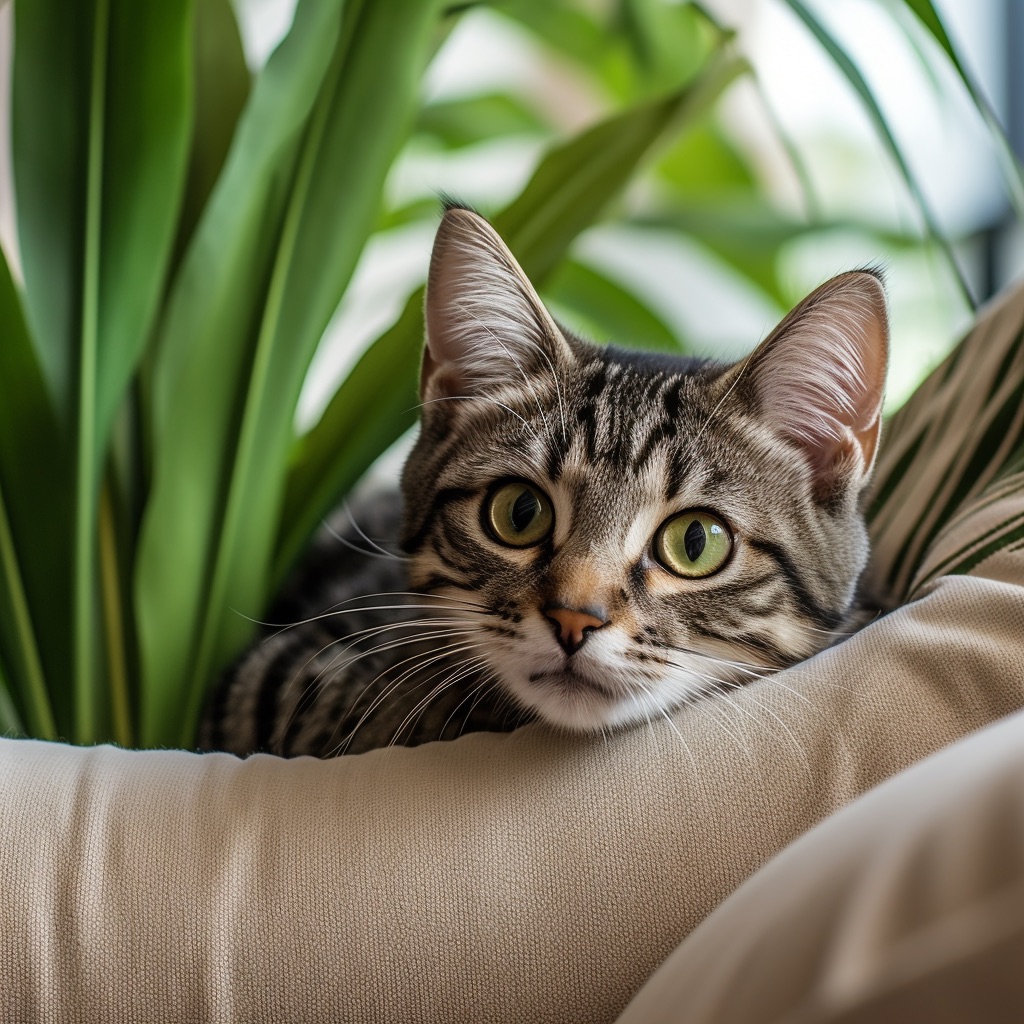
Safe Plants for Cats: Your Feline's Green Oasis
Fear not, plant enthusiasts! There exists a wonderful world of plants that your feline friend can safely enjoy, adding a touch of greenery to their lives without compromising their well-being. Let’s explore some of the most popular cat-friendly plants that can brighten your home and provide your kitty with some harmless nibbling opportunities.
Catnip, a common herb, is a true feline favorite. Its enticing aroma sends cats into a playful frenzy, making it a great way to engage their senses and encourage some indoor exercise. Spider plants, with their cascading leaves and easy-care nature, are also a safe choice for your cat to explore. Their non-toxic nature ensures your kitty can safely nibble on them without worry.
Oat grass, a nutritious source of fiber, can provide your cat with essential digestive support and help prevent hairball formation. Its gentle taste and texture make it an appealing treat for many feline friends. For a touch of elegance, consider adding a Silver Vine plant to your home. Its leaves contain a substance that cats find irresistible, promoting dental health as they chew on it to remove tartar.
And if you’re looking for a plant that can soothe your cat’s anxieties, Valerian is a great option. Its calming properties can help reduce stress and promote relaxation, making it ideal for those felines who need a little extra tranquility in their lives.
So, embrace the joy of plants in your cat-friendly home, knowing that these safe and delightful options can enrich your cat’s life without compromising their health. Remember, moderation is key, and always consult your veterinarian if you have any concerns about your cat’s plant consumption.
Check out our other articles on what we can and can’t include in our cat’s diets:
For a reliable resource you can reference moving forward, we recommend the ASPCA Toxic and Non-Toxic Plants List. This comprehensive list provides information on the toxicity of various plants for cats and dogs. Visit their website for the complete list.
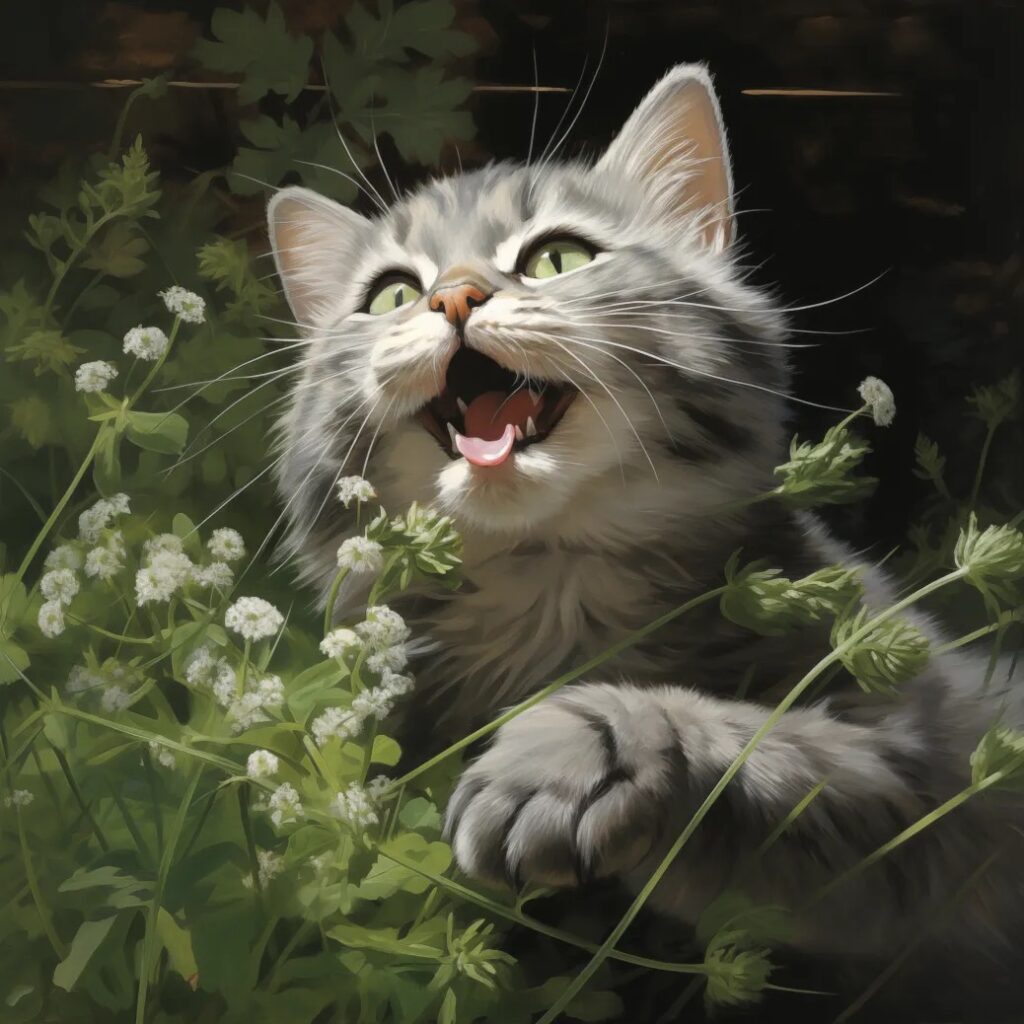
Plants to Avoid: Protecting Your Feline Friend
Just as there are plants that your cat can safely enjoy, there are also some that pose serious health risks. These potential hazards can cause unpleasant symptoms, from digestive upset to more severe health complications. So, let’s take a closer look at some of the plants you should keep out of reach of your curious kitty.
Lilies, those beautiful blooms that grace many homes, are unfortunately highly toxic to cats. Even a small amount of lily ingestion can lead to kidney failure, a life-threatening condition. Tulips, another popular flower choice, share similar levels of toxicity, causing vomiting, diarrhea, and even seizures in cats.
Azaleas, with their vibrant blossoms, are another no-go for feline friends. Ingesting any part of an azalea plant can cause a range of unpleasant symptoms, including vomiting, diarrhea, and even neurological issues. Oleander, a common ornamental plant, is also highly toxic to cats. Its leaves and flowers contain compounds that can cause cardiac problems, making it a serious threat to feline health.
And if you’re considering adding a Sago Palm to your home décor, think again. This tropical plant’s seeds and leaves contain a toxin that can cause severe liver damage in cats. Symptoms include vomiting, diarrhea, and even seizures.
Remember, when it comes to your cat’s health, it’s always better to err on the side of caution. If you’re unsure about the safety of a particular plant, keep it out of your cat’s reach and consult your veterinarian. Their expertise can help you make informed decisions to protect your feline friend’s well-being.
If you suspect your cat may have ingested a toxic plant, call an Animal Poison Hotline like ASPCA Animal Poison Control Center immediately. This 24/7 hotline can provide immediate advice and treatment options in case of suspected pet poisoning. Call them at (888) 426-4435.
Keeping Your Cat Safe: A Guide to Plant-Purrfect Harmony
As a loving cat owner, you want to ensure your feline friend thrives in a safe and healthy environment. While plants can add beauty and vibrancy to your home, it’s crucial to take steps to protect your cat from any potential hazards.
First and foremost, create a designated plant-free zone in your home, whether it’s a room or a specific area that’s off-limits to your cat. This will minimize their exposure to potentially harmful plants.
Next, consider using natural plant repellents to deter your cat from nibbling on your beloved greenery. Citrus-scented sprays or homemade solutions using cayenne pepper can effectively keep your cat at bay.
Additionally, strategically place your plants where your cat is less likely to reach them. Hanging plants or placing them on shelves or high surfaces can help keep them out of your cat’s curious paws.
Finally, if you suspect your cat has ingested a poisonous plant, don’t panic. Act quickly and contact your veterinarian immediately. They can provide prompt medical attention and help minimize any potential harm.
Remember, with a little caution and planning, you can create a harmonious home where your cat and plants can coexist peacefully. Embrace the beauty of greenery while safeguarding your feline friend’s well-being, ensuring a happy and healthy life for both.
Creating a Cat-Friendly Garden: Where Feline Friends and Flora Thrive
Imagine your backyard transformed into a sanctuary where your feline friend can frolic amidst lush greenery, enjoying the fresh air and sunshine while exploring a world of cat-friendly plants. Sounds like a dream come true? Well, with a bit of planning and creativity, you can create a cat-friendly garden that your feline companion will adore.
Start by selecting cat-safe plants that are not only harmless to your kitty but also offer a variety of textures and scents to pique their curiosity. Catnip, spider plants, oat grass, and silver vine are all excellent choices, providing both enjoyment and health benefits.
To make your garden even more feline-friendly, consider adding scratching posts and climbing structures. These provide your cat with opportunities to exercise, stretch, and fulfill their natural instincts, keeping them entertained and engaged.
And don’t forget to incorporate cat-friendly herbs like rosemary, thyme, cilantro, and parsley into your garden. These fragrant delights not only add a touch of flavor to your culinary creations but also provide a sensory experience for your cat.
As you design your cat-friendly garden, keep your feline’s safety in mind. Avoid using toxic plants, such as lilies, tulips, azaleas, oleander, and sago palms. These pose serious health risks to your cat and should be kept far out of reach.
Remember, creating a cat-friendly garden is a journey of exploration and discovery. Experiment with different plants, observe your cat’s reactions and make adjustments as needed. With a bit of care and attention, you can transform your outdoor space into a haven of harmony for both you and your feline friend.
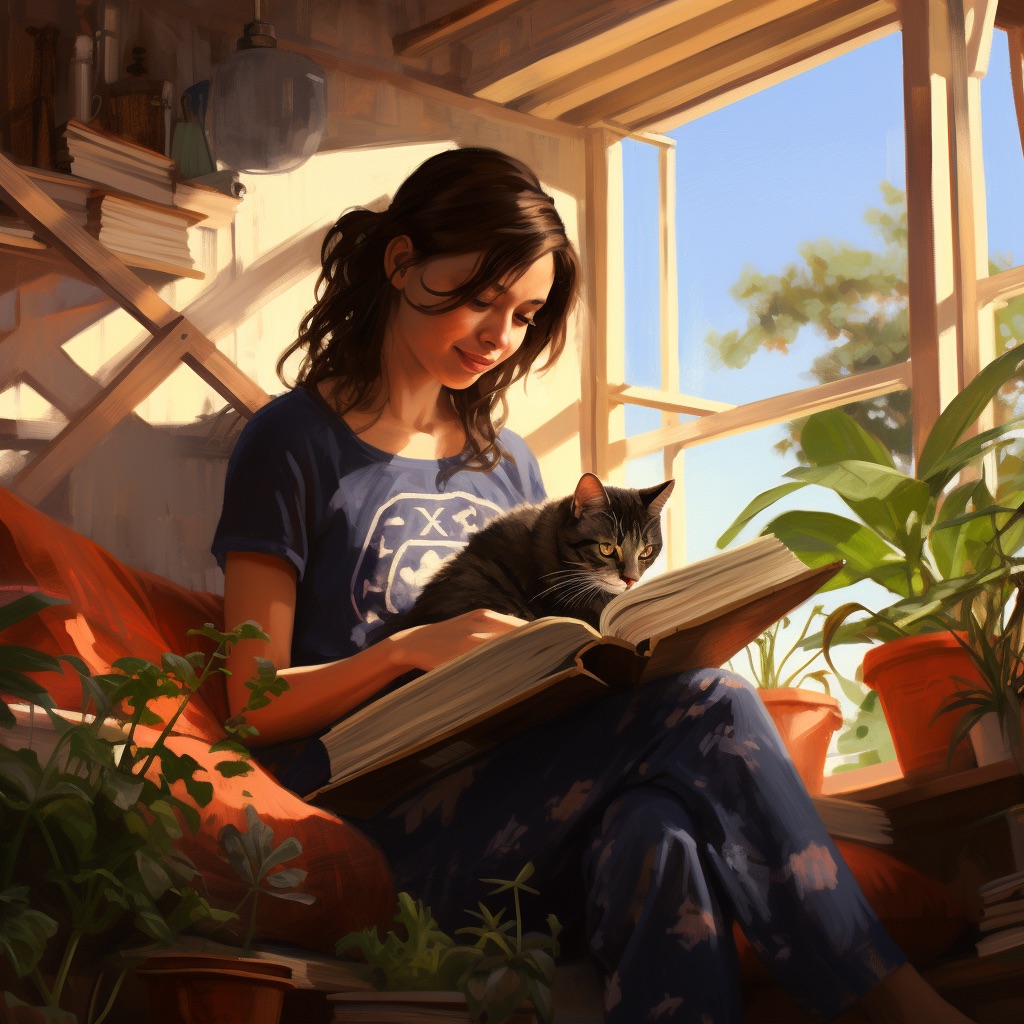
Conclusion: Cats and Plants – A Tale of Two Worlds in Perfect Harmony
The relationship between cats and plants may seem like an unlikely pairing, but with a bit of understanding and creativity, these two worlds can coexist in perfect harmony. By embracing cat-safe plants, creating a plant-friendly home and garden, and prioritizing your cat’s well-being, you can transform your living space into a haven where both you and your feline friend can thrive.
Remember, cats are curious creatures, and their occasional nibbling on plants is often a sign of their natural instincts. By providing them with safe and enjoyable alternatives, you can satisfy their curiosity while ensuring their health remains a top priority.
So, embrace the beauty of greenery, indulge your cat’s love for exploration, and cherish the unique bond you share with your feline companion. With a harmonious coexistence, your home will become a sanctuary of joy, where cats and plants can live in perfect balance.

Cat-Friendly Gardening: Creating a Safe Haven for Your Feline Friends
Table of Contents Introduction Hey there, fellow feline enthusiasts! 🐾 Welcome to a space where your garden becomes not just a patch of green but
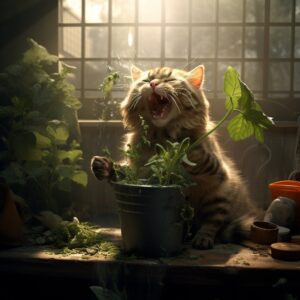
From Lilies to Sago Palms: Protect Your Cat from These 10 Toxic Plants
Table of Contents Introduction: Keeping Your Furry Friend Safe from Toxic Plants Hey there, fellow cat lovers! We all know our feline companions can be

Cat Nutrition 101: Decoding Labels & Essential Nutrients A-Z!
Table of Contents Introduction As a cat owner, you want nothing but the best for your furry feline friend. And that includes providing them with
